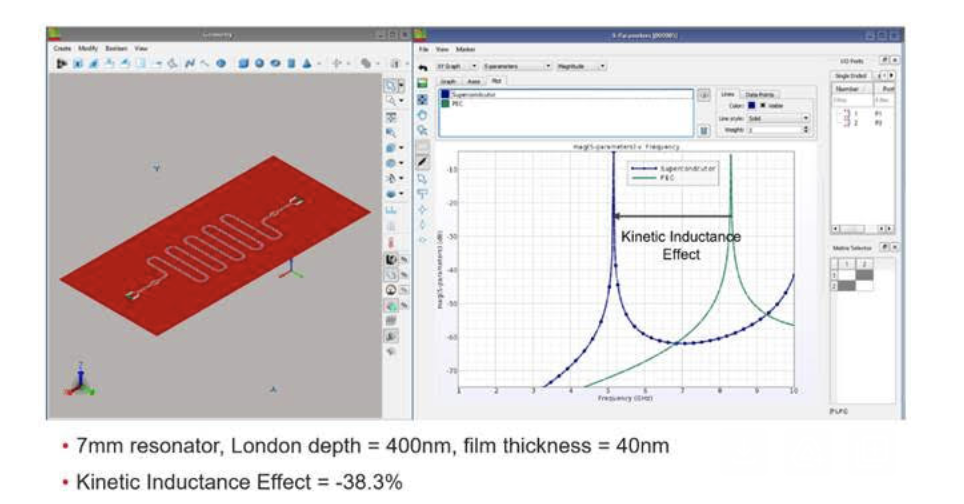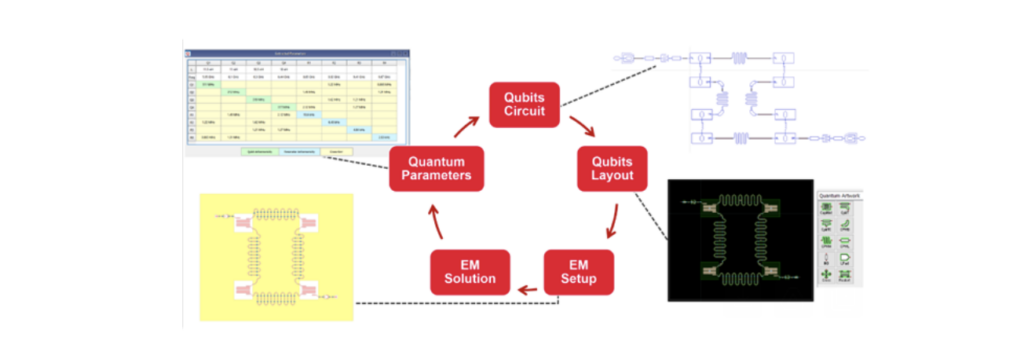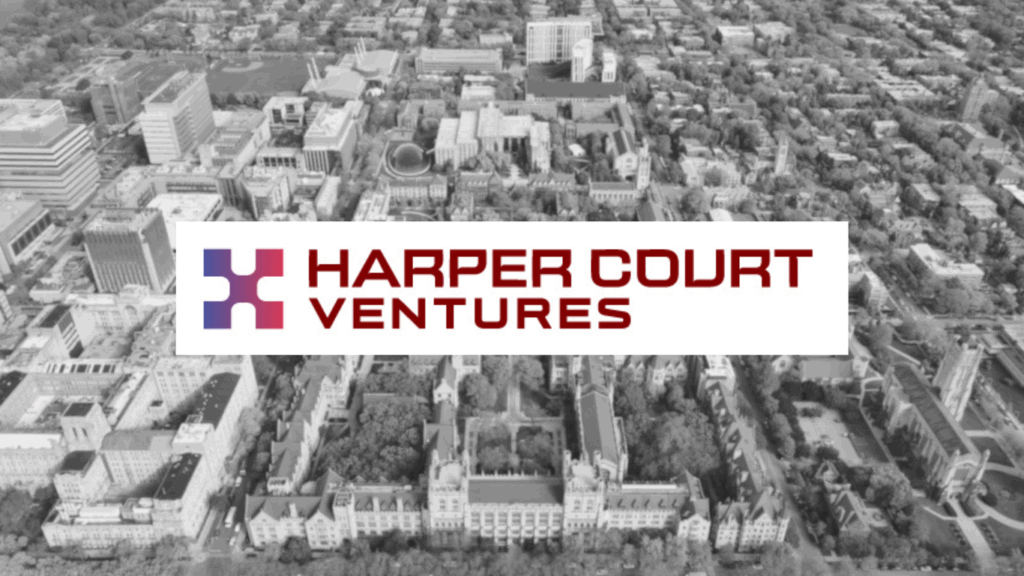Guest Post by Mohamed Hassan, Quantum Solutions and Planning Lead at Keysight Technologies
So far, superconducting quantum design has called for highly specialized expertise working with mostly improvised design tools within a homegrown workflow. The result has been long design cycles culminating in highly customized chip designs in systems that are challenging to scale.
For superconducting quantum computing systems to reach critical mass, the practices around supercomputing quantum design must evolve, bringing more designers and more electronic design automation (EDA) workflows to bear. If mainstream practices from other disciplines – such as radio frequency (RF) component and systems design – were introduced for existing and prospective quantum computing designers, design cycles would shorten, and development would concentrate on specific feature innovations and differentiation.
Enough superconducting quantum designs exist today that a pattern of solutions to design challenges is emerging, and with it, a path to quantum-specific EDA tools that look and feel more like RF EDA tools many designers are familiar with today. Lowering the expertise barrier to entry will democratize superconducting quantum design and help bring it into the mainstream more quickly. Here, we briefly explore these designs’ primary elements, some parallels to conventional microwave design, and the characteristics of design tools and workflows needed for taking on superconducting quantum design challenges.

Three primary elements of superconducting quantum design
Superconducting quantum computers are revolutionizing the field of computing with their unique architectural blend. They integrate principles from both conventional digital and analog computing, harness atomic-level physics, and employ cutting-edge superconductor technology in their chip designs. This innovation offers computational capabilities that scale exponentially with the number of qubits, enabling tasks that far surpass the limits of even the most advanced digital systems.
Platforms typically follow a hardware architecture, shown in Figure 1, constructed from three primary elements: qubits, quantum-limited amplifiers (QAs), and a cryogenic microwave system.

Qubits form the basis for a quantum processing unit (QPU), where an individual qubit is essentially an artificial atom that takes one of two energy levels under the appropriate stimulus, with n entangled qubits representing 2n stable states. Transmon qubits employ two Josephson junctions (JJ) and a large shunt capacitor, which provides improved charge noise resistance. Qubits interconnect via tuned microwave resonators, with resonators and qubits each resonating at specific, unique frequencies – requiring system-wide design management, an increasing challenge as the number of qubits grows.
Quantum-limited amplifiers (QAs) improve qubit readout fidelity with low-noise amplification at cryogenic temperatures, pulling faint microwave signals out of a noise floor using principles of quantum mechanics. State-of-the-art QAs reach new levels of performance with advanced technology, such as the Josephson traveling wave parametric amplifier (JTWPA). In JTWPAs, thousands of JJs are arranged along a tight, meandering path, producing high-gain, ultra-low-noise amplification stages over a wide range of frequencies in a compact footprint.
Cryogenic microwave systems integrate qubits and QAs, providing system control functions and readout of measurements. Stimuli and responses require precise timing, which is more challenging as systems scale. Small QPUs likely fit within a single dilution refrigerator, but researchers are looking into distributed implementations with more than one cooling unit, increasing quantum entanglement complexity and interconnect requirements.
The common challenge across all three elements is scaling. Managing quantum computing designs with more complexity outruns the capability of homegrown design workflows and increases the risk of expensive failures detected late in hardware prototyping. Fortunately, breakthroughs in comprehensive virtual modeling and simulation capability for quantum design using lessons from microwave design can cope with the complexity and risk.
Superconducting quantum systems have microwave technology under the hood
While superconducting quantum computers may appear to harness exotic physics, their practical design elements operate using microwave technology, often in the 4 to 10 GHz range. Accurate modeling of behaviors such as these that follow provides the basis for superconducting quantum system simulations.
- JJs exhibit very low energy dissipation with extreme non-linear inductance. These characteristics make them ideal for constructing artificial atoms with stable energy-level spacing in two distinct states, with small inputs triggering a state change.
- Layouts targeted for implementation in the same chip can feature large structures, such as in the JTWPA, and minute features, such as co-planar waveguides (CPWs) in resonators. Modeling must accommodate both with adequate resolution to achieve behavioral fidelity.
- Multilayer implementations can improve qubit scaling by stacking qubits in 3D layouts to keep chip footprints relatively small. Modeling and simulation requirements for 3D chip and package layouts become more complex.
- Kinetic inductance displayed by superconductors needs special modeling attention. Overlooking superconductor kinetic inductance in material models can cause as much as a 40% miss in resonance frequencies in some cases (shown in Figure 2), and any resulting frequency overlap between qubits or resonators can deter quantum entanglement.
- QAs are instances of parametric microwave circuits and can be analyzed using non-linear circuit solvers developed initially for non-linear microwave power amplifiers. QA responses are non-linear and input power-dependent. Performance metrics for QAs are similar – including gain, quantum efficiency, and noise across the operating bandwidth.

Figure 2 – resonance frequency for perfect electric conductor (green trace) versus superconductor with kinetic inductance modeled (blue trace)
EDA technology now allows models with defined physical layouts and electromagnetic (EM) behavior to capture much of the detailed knowledge needed for superconducting quantum system design. EM simulators using these robust models can obtain fast results and provide insights for design optimization, leading to better chances for first-pass success in fabricating chips, modules, and systems.
Enhancing EDA tools and workflow for the quantum design challenges
Keysight research into superconducting quantum design has created QuantumPro, a set of EDA libraries and tools in a cohesive workflow that automates design tasks and advanced analysis. One quantum design workflow (illustrated in Figure 3) carries designers from library-based circuit layouts to quantum parameter solutions that improve predictable qubit quantum entanglement before committing to hardware.

Figure 3 – Five integrated functions in a unified EDA quantum design workflow
Based on Keysight’s Advanced Design System (ADS) platform for microwave design, QuantumPro has many quantum-specific enhancements, including built-in, fully-parameterized quantum artwork and the ability to generate layouts automatically from schematics. Several enhancements streamline the workflow for fast, accurate analysis.
First is faster EM simulation techniques.Instead of solving for an entire 3D volume as a conventional EM solver would, QuantumPro EM simulation using the method of moments (MoM) only solves for currents on metal surfaces, significantly reducing simulation time while producing rapid, accurate results. Next are novel non-linear circuit/EM co-simulation techniques. A Full EM Analysis, using both the finite element method (FEM) and MoM, produces S-parameters at input and output ports. Energy Participation Analysis allows for finding the eigenmodes of the system with the FEM solver. Combining the EM and non-linear circuit flows through JJ models accurately inspects and characterizes power-dependent QA response using harmonic balance simulation,
Finally, automated quantum parameter extraction simplifies analysis and confirms accurate results using three different extraction methods – quasi-static, black box quantization, and energy participation ratio (EPR). Users can see and compare quantum parameter extraction results in the same user interface where schematics and layouts exist, make necessary changes, and re-run extractions immediately. Python scripts help users customize the workflow and user interface, easing the transition from a homegrown workflow.
Reaching scale with superconducting quantum designs
Quantum computer scalability will ultimately hinge on design predictability. Design practices for small systems need reexamining as qubit counts and complexity grow, with the introduction of more efficient workflows and automation. Superconducting quantum systems benefit from introducing microwave design and simulation techniques tuned for the nuances of the quantum environment. Powerful, easier-to-use, accurate virtual design tools will help democratize the process, bringing more designers and ideas to the superconducting quantum computer design field, and first-pass design success will reduce cost and risk in development.
















